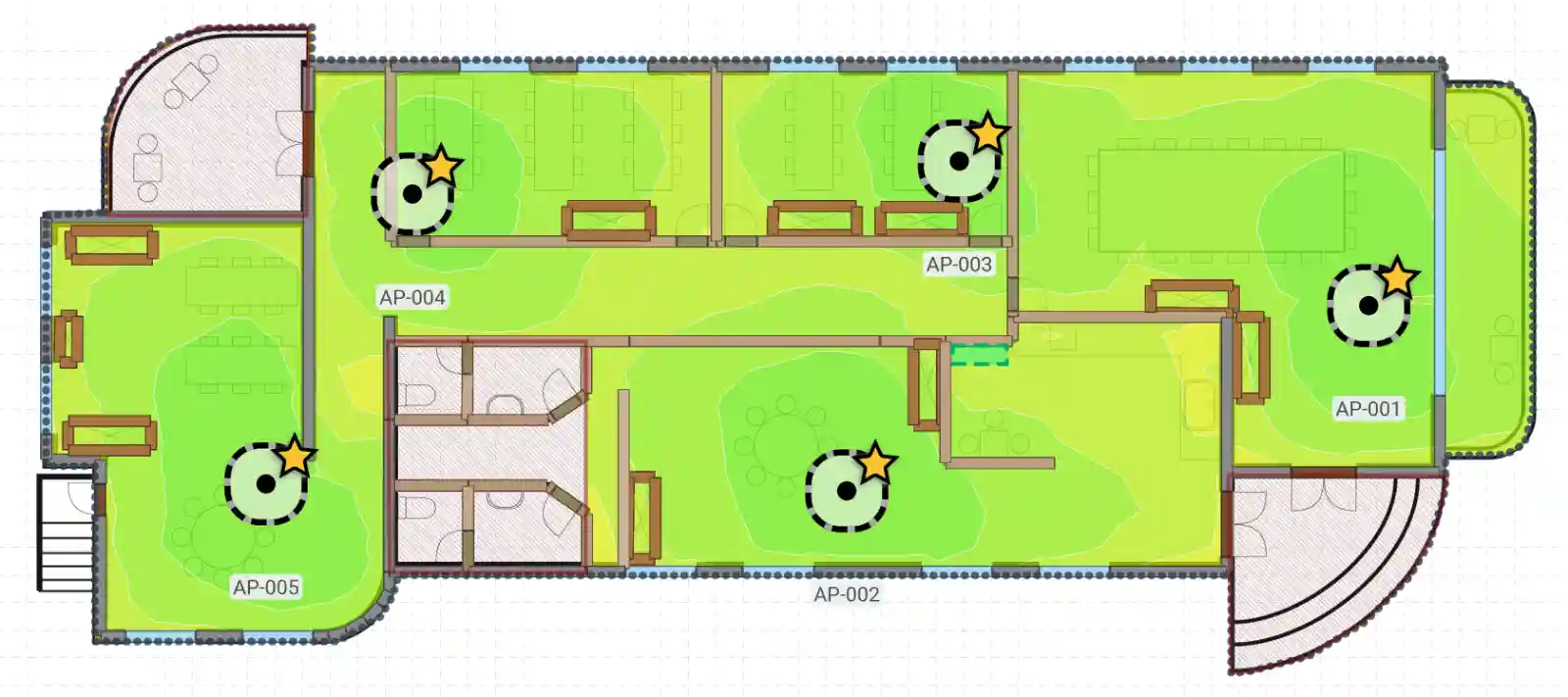Filter products
–
WiFi Design (WiFi Simulation)
The WiFi simulation is a process in which a wireless network is virtually modeled and tested using software tools before it is physically implemented. The goal is to evaluate and optimize the network's performance, coverage, and reliability by simulating various scenarios and configurations. Here are some essential aspects and benefits of a WiFi simulation: Aspects of a WiFi Simulation Virtual Modeling: Creating a digital model of the physical environment where the WiFi network is to be installed. Considering building layouts, wall materials, and other physical obstacles that might affect the signal. Simulation of Various Scenarios: Testing different Access Point (AP) placements, antenna types, and frequencies. Considering interferences from other wireless networks or devices. Performance Evaluation: Analyzing signal strength, coverage, and throughput rates in various areas. Identifying dead zones or areas with weak signal strength. Optimization: Adjusting AP positions, transmission power, and channel assignment to maximize network performance. Planning roaming capabilities to ensure seamless connections for mobile users. Benefits of a WiFi Simulation Cost Efficiency: Avoiding expensive and time-consuming changes after physical installation. Reducing material and labor costs through precise planning in advance. Time Savings: Faster implementation through prior optimization and planning. Reducing the number of site visits and physical tests. Accuracy and Reliability: More accurate predictions about network performance based on realistic models and simulations. Increased reliability by identifying and resolving potential issues before installation. Flexibility: Ability to test various design alternatives and "what-if" scenarios without making physical changes. Adapting to future changes or expansions of the network with minimal effort. Typical Steps in a WiFi Simulation Data Collection: Gathering information about the physical environment, usage requirements, and existing infrastructure. Modeling: Creating a virtual model of the environment and configuring the simulation parameters. Simulation and Analysis: Conducting simulations, analyzing the results, and identifying optimization potentials. Reporting: Creating a detailed report with recommendations for network planning and implementation. WiFi simulations are particularly useful in complex or critical environments such as large office buildings, industrial facilities, hospitals, or universities, where optimal network configuration is crucial for operation and user satisfaction.
Price on request

powered by
codemaschine.de
codemaschine.de


